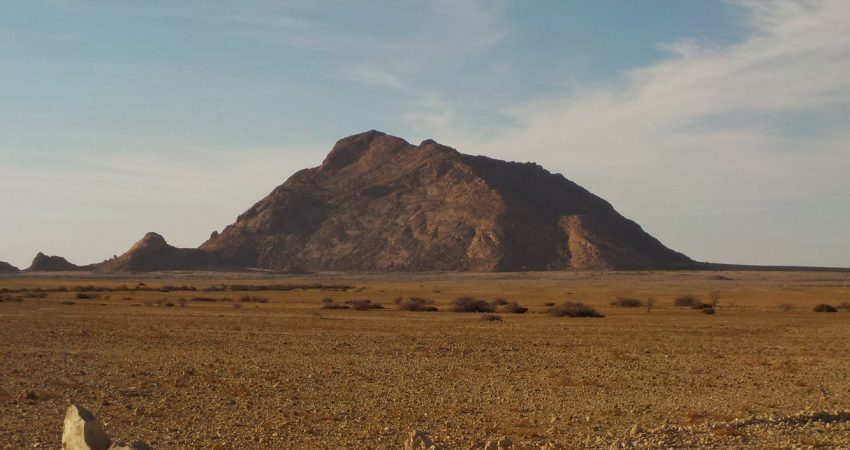Erongo, Namibia
30 January 2018
With Wen
As the smaller and far less popular sister to the nearby Große Spitzkoppe, the Kleine Spitzkoppe (German for “small pointy peak”) sits by itself off the main gravel road, somewhat removed from the tourist bustle surrounding its bigger sibling. Both are inselbergs, isolated granite mountains in a flat desert plain that represent remnants of volcanic activity millions of years ago. While the Große Spitzkoppe, also dubbed “Matterhorn of Namibia”, is routinely scaled by climbers and is a technical endeavor, the Kleine Spitzkoppe can be conquered without any special equipment.
We didn’t have much info to go by and basically just drove up to the peak. On the way in we met Harold, a local farmer and former truck driver who owns some of the land in the area. Although we didn’t buy any of the gemstones he offered for sale, he happily let us camp on his land and showed us the best spots to pitch up a tent. There aren’t any facilities here, so we just parked in a wind-sheltered corner right at the foot of the mountain after a short day of driving from the picturesque town of Swakopmund. Swakopmund has to be the cleanest, neatest town I’ve ever seen in all of Africa – a bit of an anomaly on the continent really and definitely an interesting place to visit in Namibia!
The next day we were up early to start our hike before the sun would get too hot. Trudging up the steep southern slopes of the mountain, we quickly realized that our starting point wasn’t ideal and we should’ve probably come up the east or north side instead. Because the summit is at the northern end of the ridge, we now had almost the entire ridge to traverse, a time-consuming and cumbersome undertaking with quite a few ups and downs. The terrain consists of large boulders, steep slabs, shrubs and bushes, interrupted by short cliffs and gullies. About half way up, our route led us right on top of a large rock arch. Despite its impressive geometry it was very thin in the middle and I wasn’t sure if it was going to hold our weight, so we backtracked and I scrambled around it. At this point Wen had had enough and decided to head back… understandable, since it wasn’t really much fun anymore. I still couldn’t see the summit and at least wanted to get a glance, so I continued. I kept thinking that a view of the remaining ridge must be coming up soon, but every time I came to a small bump there was more to climb and the slope just kept going up. Eventually, I came to a false summit which is a mere 8 m lower than the true high point! I could see the rest of the route now and I wasn’t happy – it involved a considerable elevation loss to get down to a saddle before the climb up the true summit, plus the terrain looked quite complicated. But I was here now, so off I went (what else was I going to do!).
It took me a long time to get off the false summit, with lots of route finding through large boulders and steep slabs, including some difficult scrambling moves in a narrow gully. Once through the saddle, the angle of the slope leading up to the true summit got steeper and steeper, and I got dead-ended several times trying to find a line. I tried the narrow ridge crest again, where a short but very steep rock slab (difficult friction moves) led to the exposed crest. The sight of an old rappel sling at the top of the slab didn’t help to boost my confidence! Several times I thought that’s it, I’ll have to turn around here and go back… but somehow there was always a way forward. After a little searching and a few more tough scrambling moves I reached the large summit complete with iron pole. Phew! That was a lot harder than I had expected!!
Being on an inselberg, an isolated “island” in a vast sea of yellow sand and dust, the views from the top were simply amazing, especially with the beautiful jagged silhouette of the Große Spitzkoppe right in front of me. Nonetheless, my moment of elation didn’t last too long… thoughts about those dicey downclimbs back to the saddle were nagging my mind. So I packed up and made my way back exactly the same way I came, with the same squeezes, the same friction climbs, the same steps. Slow and careful, taking one step at a time, that’s the key to staying safe in difficult scrambling terrain, especially on the descent when concentration usually wanes…
From the saddle I headed in an easterly direction straight down towards the base of the peak, which turned out to be much easier and more enjoyable than messing about on that complicated ridge. It felt so good to be back on flat sandy ground at the bottom, because now all I had to do was circle around the base to get back to camp. I was absentmindedly plodding through the trees when all of a sudden a tall Namibian man with a large iron hammer appeared in front of me. He looked quite intimidating with his tattered shirt and a bit of a grim look. Puzzled at first, I quickly realized that he was just a local gemstone hunter out to look for stones. After some friendly greetings he showed me what he had found so far: beautiful shiny crystals of topaz, tourmaline, and amethyst. The latter is a quartz variety that’s sought after by collectors for its attractive purple colour and well-shaped crystal faces. He offered them to me for a pretty decent price, but having a ton of rocks sitting around at home already I gratefully declined.
Half an hour later I arrived back at our camp. It was sweltering hot by now and I was pretty tired. Kleine Spitzkoppe had been a challenge and remains the toughest scramble out of all the summits we scaled in Namibia. Of course there may be an easier way up the east or north side, I don’t know and I haven’t tried any alternatives. As demanding and difficult as my route was, it was nevertheless quite enjoyable and a great adventure!
Notes on logistics:
- Getting to the summit of Kleine Spitzkoppe on the route described here is NOT a hike. While it can be done as a difficult scramble, many people would probably appreciate the benefit of a rope. Sections near the summit are very steep and exposed, with the consequences of a fall being severe injury or death.
- Campsites, rooms, restaurant and bar are available at the nearby Große Spitzkoppe: spitzkoppe.com

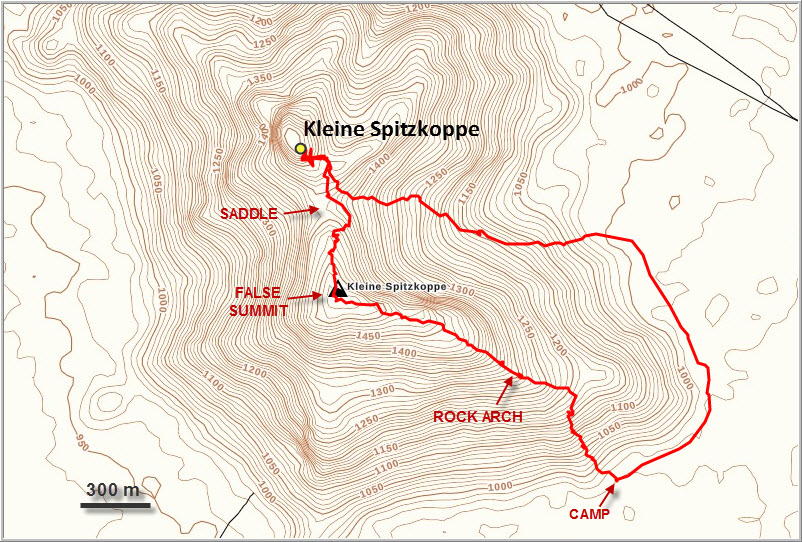
DISCLAIMER: Use at your own risk for general guidance only! Do not follow this GPX track blindly but use your own judgement in assessing terrain and choosing the safest route.
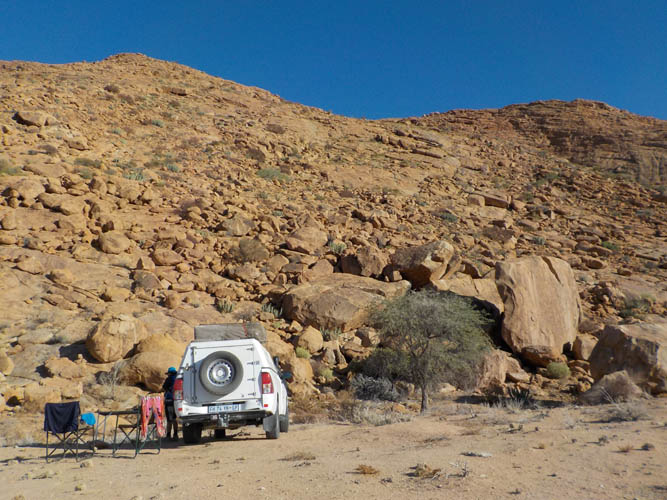
Our camp at the foot of the mountain.
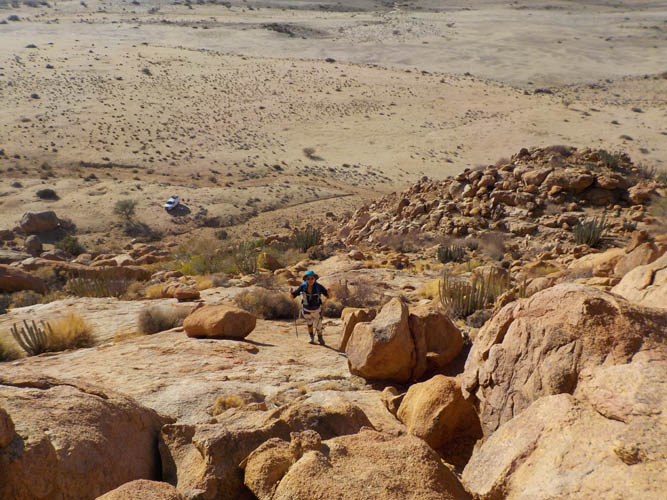
There are no trails here, we just head up along the line of least resistance.
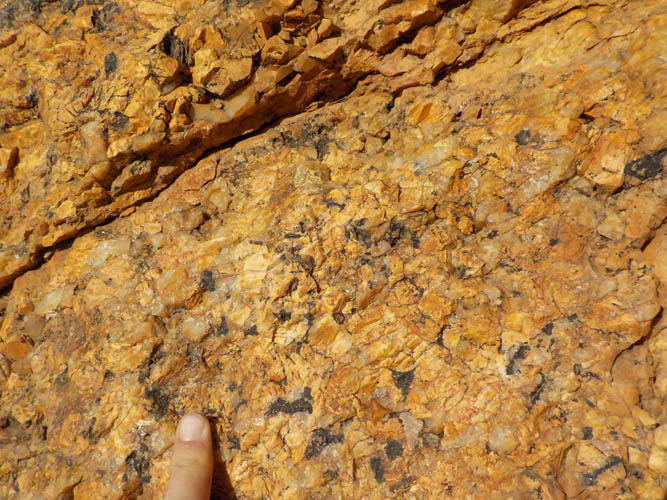
Granite with lots of coarse feldspar crystals.
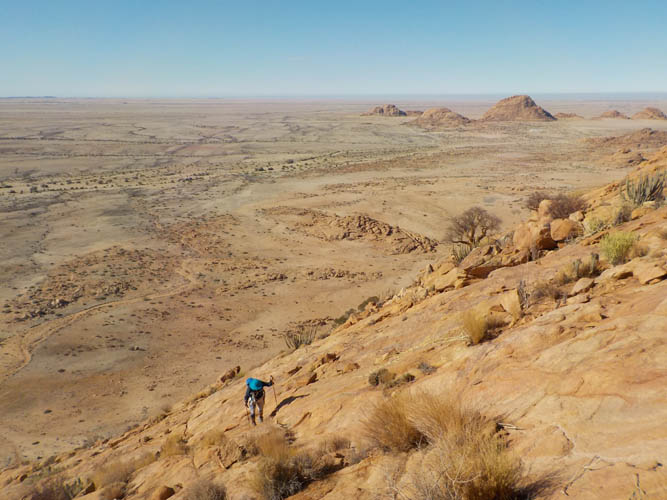
In some sections there are smooth rock slabs that make it much easier to gain elevation quickly.
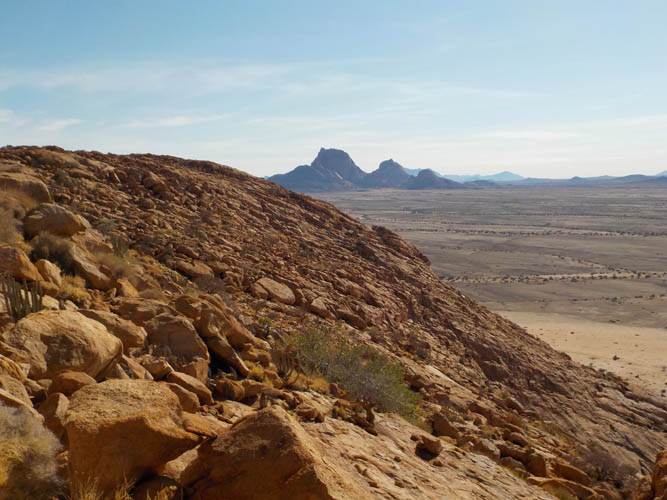
The Große Spitzkoppe beckons to the NE.
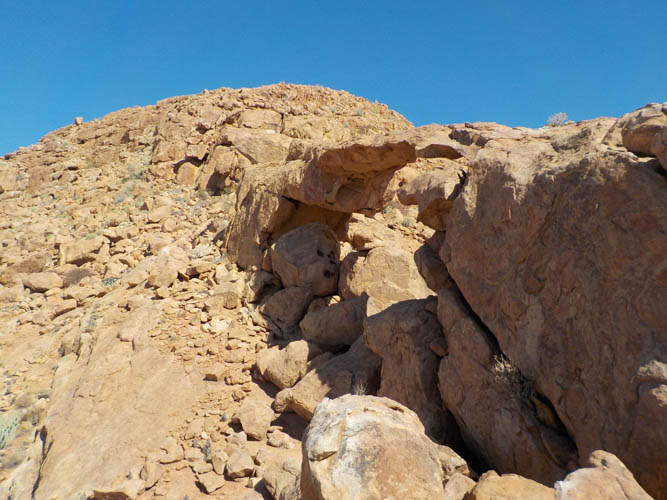
The rock arch.
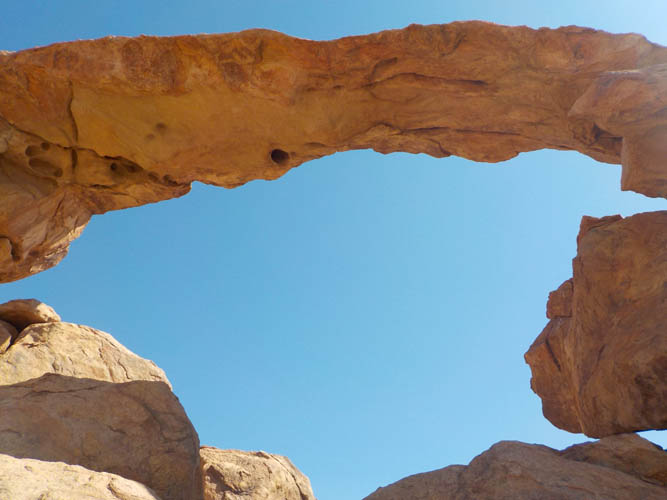
The rock arch looked so fragile, we didn’t dare step on it.
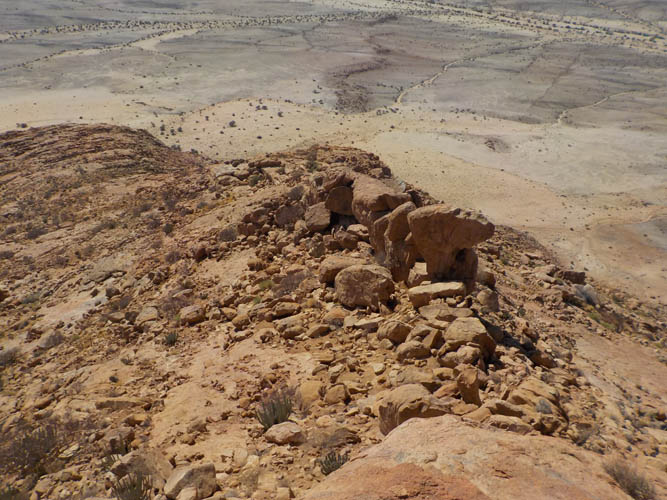
The rock arch forms the crest of the ridge with a big boulder at its highest end.
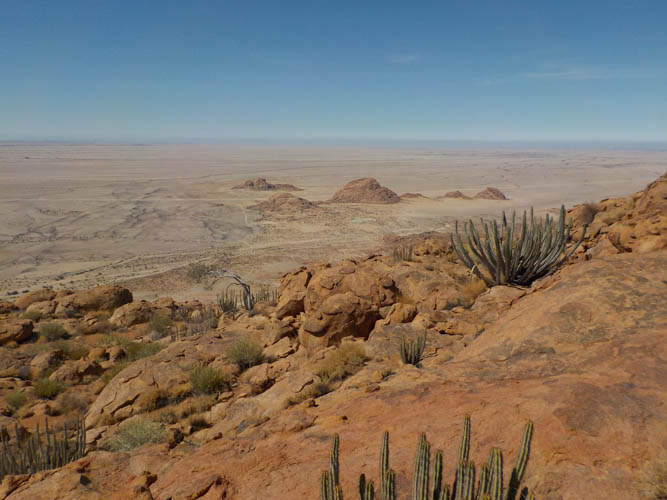
Views to the west.
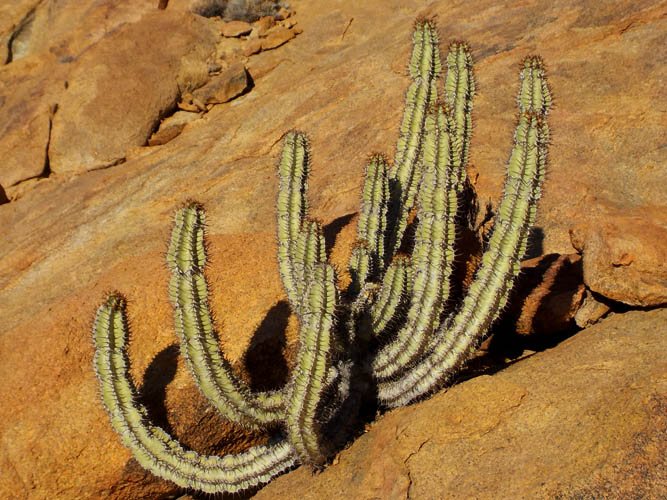
A beautiful cactus found a way to grow between the hard rock.
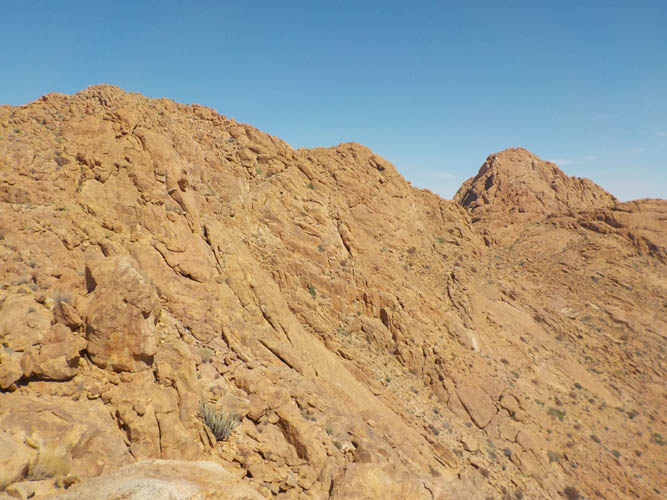
The remainder of the ridge with its false summit on the left and true summit on the right still has a lot of work for me in store.
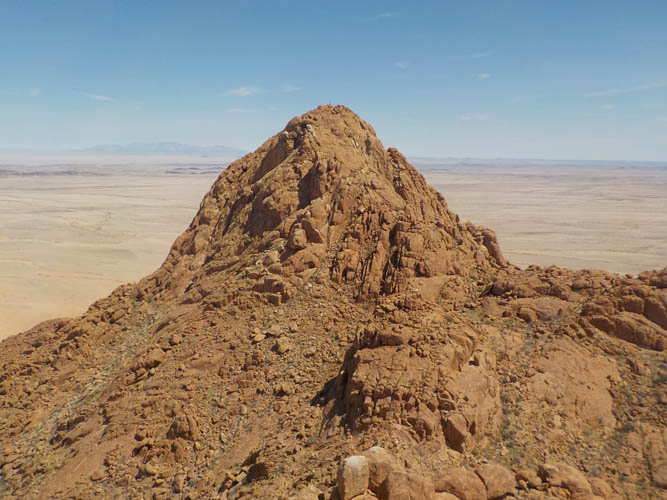
Kleine Spitzkoppe summit tower.
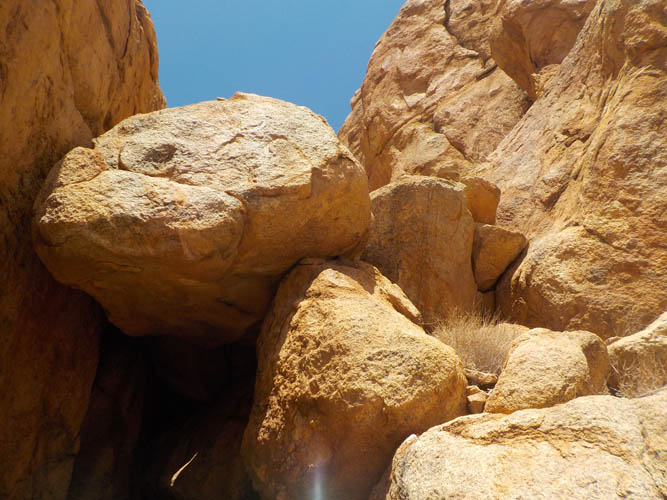
To get there, I first had to descend from the false summit. Plenty of difficult scrambling here, such as in this narrow drainage.
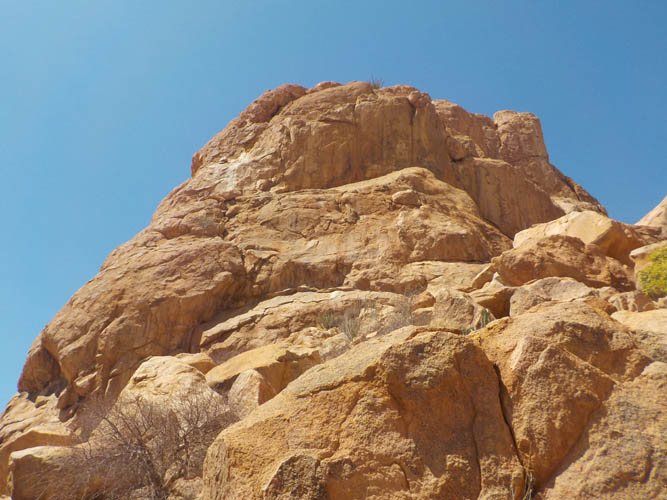
Looking back at the false summit: zig-zagging down this thing isn’t straightforward!
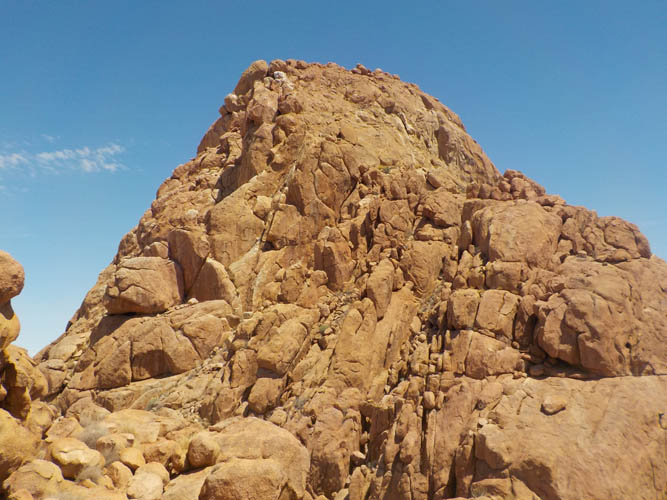
The route up the summit tower first took me a short distance around the left side, then back onto the ridge crest to some small white boulders (seen here near the top of the picture).
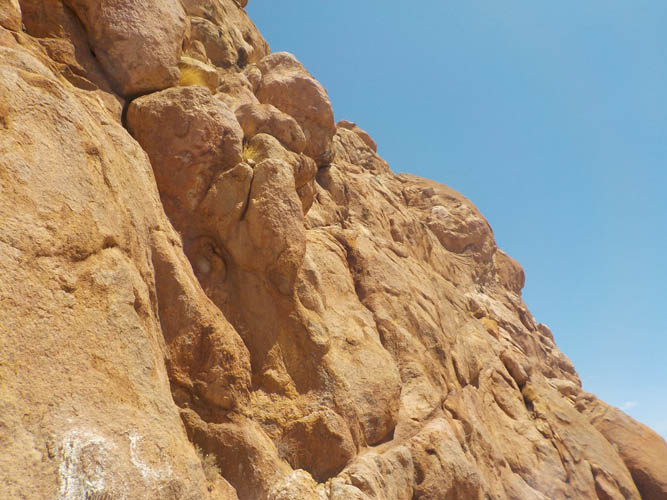
On the right side of the ridge rest the terrain is way too steep for scrambling!
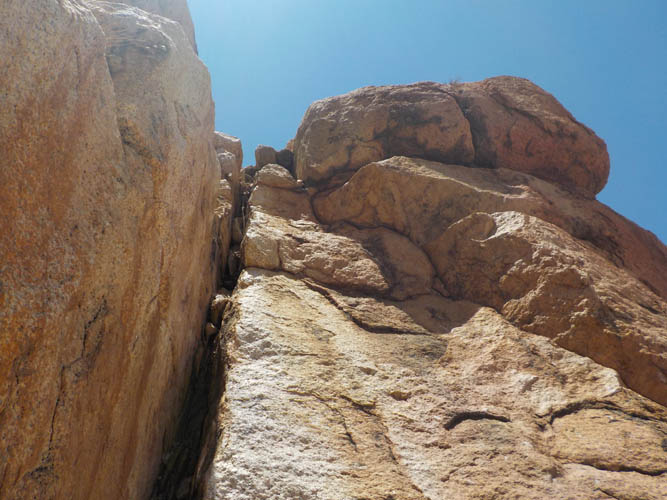
The friction slab on the left side of the crest that leads to the small white boulders. It’s fairly steep and a bit exposed, but short.
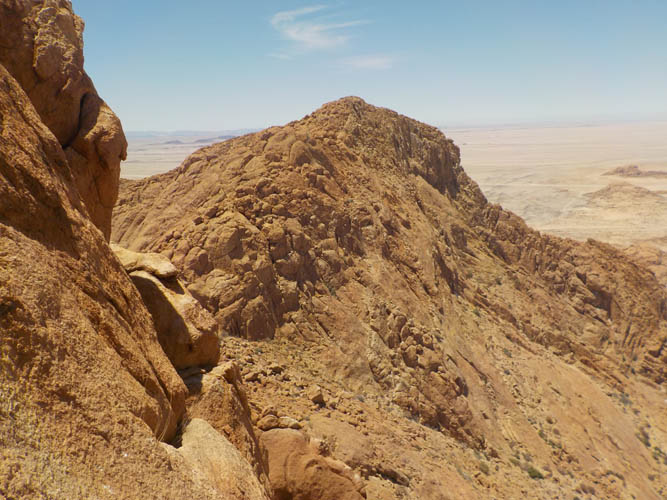
There aren’t many other options, at least not if approaching from this side.
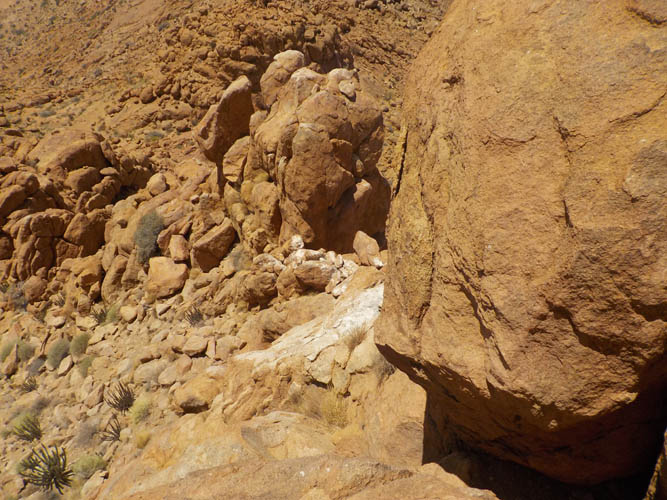
Along the narrow ridge crest: this is looking back down to the white boulders where I came up from the right.
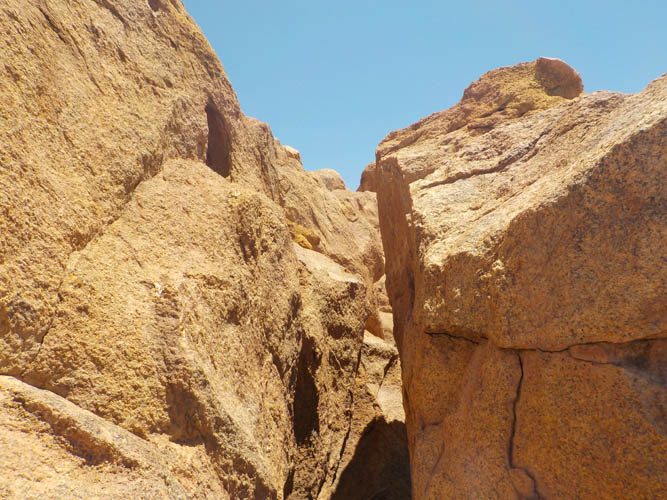
A tight squeeze is required through this narrow crack.
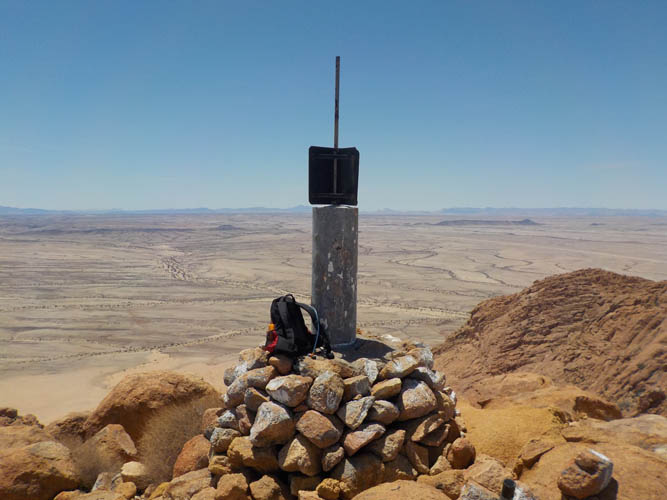
Kleine Spitzkoppe summit cairn.
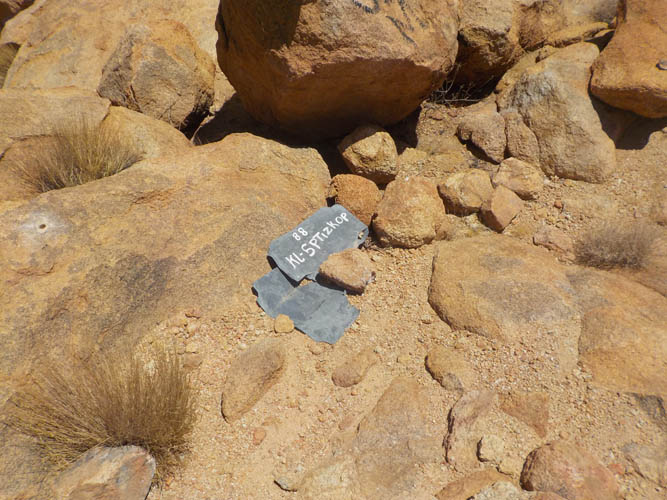
There was no register, and I assume this peak doesn’t see too many visitors.
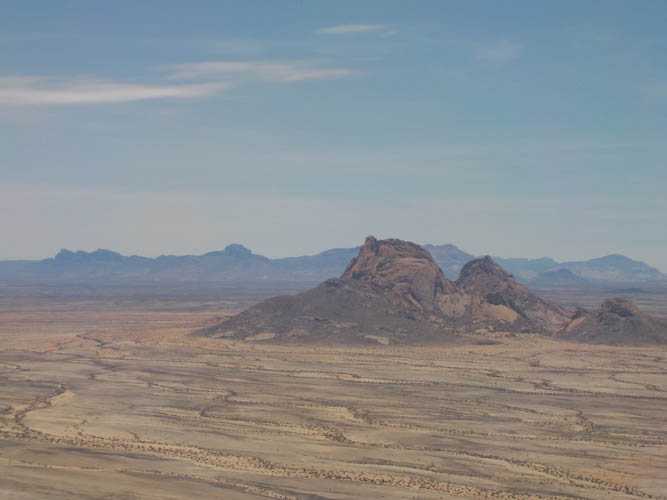
In the flat plains of the Namib desert, the Große Spitzkoppe really stands out. The Erongo Mountains with the Hohenstein Peak can be seen in the background.

Heading back down the same way, with the false summit behind.
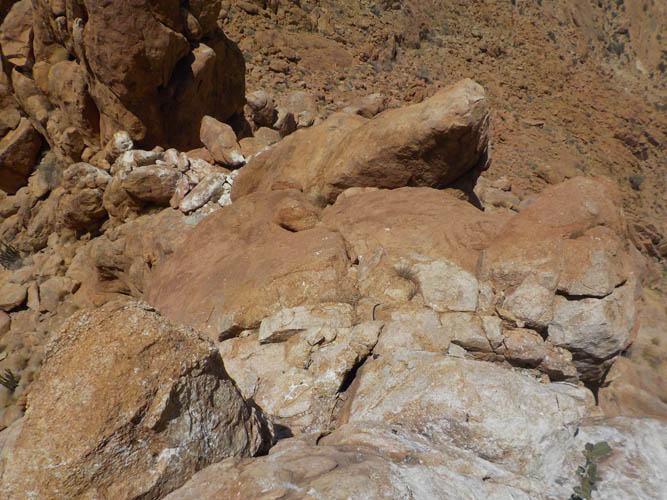
Back down to the white boulders. Quite a bit of exposure here.
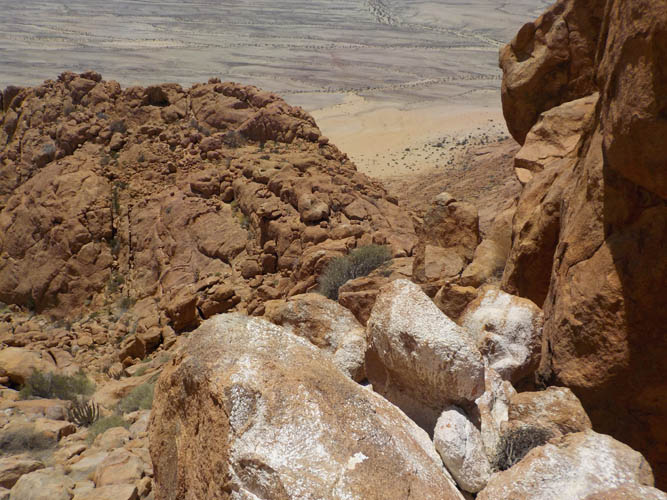
Not sure what the origin of the white colour on these rocks is – bleached animal urine perhaps? It certainly didn’t look like paint.
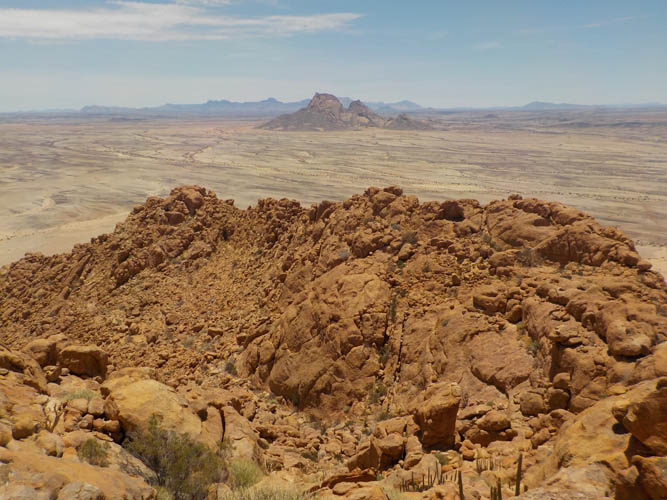
Enjoying fantastic views of a barren landscape!
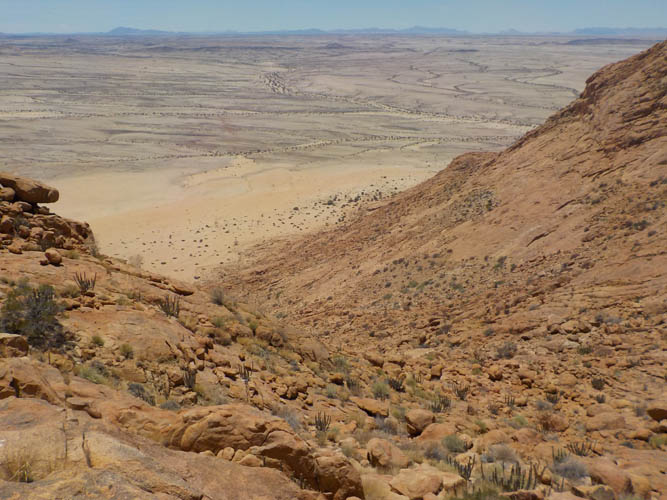
The descent valley. Much easier than backtracking along the length of the ridge!
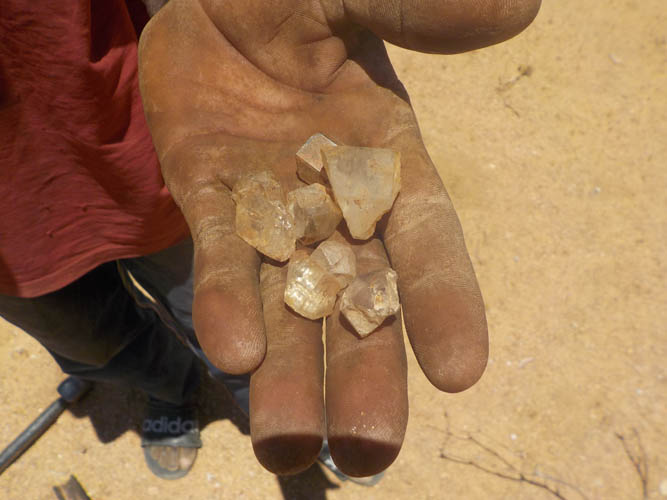
Topaz and amethyst crystals offered to us by a local gemstone hunter.
